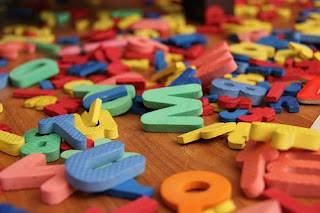Note: Canadian parks generally have park wardens rather than park rangers, the term used in the United States. Apart from the difference in name, the job is much the same on both sides of the border. If you go to a park this summer, watch for the park rangers or park wardens - and remember the Oregon park rangers described here by author Margriet Ruurs. -CE

If you are interested in science - biology, ecology, being outdoors and leading a life of adventure - you might want to consider a career as a Park Ranger. Park Rangers, or wardens, manage wildlife, the environment, but also people who visit parks and interact with wild animals.
When Julie goes to work, she doesn’t know what will happen that day. Some days she drives her truck through the park to make sure everything is okay. Or she glides across the lake in her kayak to check the water depth and quality. Other days she has to cut down a tree that poses a danger to campers, writes a ticket to someone who broke the law or sits behind her desk to do paperwork.
Julie knows one thing for certain: no day on the job is ever the same!

Julie has been a Park Ranger for almost 20 years. When she was a kid, Julie loved to go camping with her family. It was back then that she decided that she would like nothing better than to work in the outdoors. “If you like camping and hiking and boating, there’s no better job!” she says.
Park Rangers learn about law enforcement and help to ensure that park visitors respect and learn about their natural environment. “Park Rangers are a kind of policeman in the outdoors,” Julie says. She helps to protect wildlife, such as bears or bobcats, that may live in the park and makes sure that both people and wildlife are safe.
Not everything about the job is exciting: Park Rangers may also have to paint picnic shelters and tables, clean outhouses and fire pits. Some Park Rangers work in Historic Parks that preserve an important historic place for the future.

Doug is one of Julie’s colleagues. He works at a historic heritage park. Here he shows a family how an old grist mill uses the power of water to grind flour in the olden days. Interpretation of nature or history, and teaching people how to interact with their environment can be a big part of the job of a Park Ranger.
At night, Julie often patrols campgrounds. She walks around with another ranger. They chat with the campers while making sure that they treat their environment with respect. Often Julie works long days and, by the time she crawls into bed, she is tired but happy to be a Park Ranger.
What she likes best about her job is that no two days are ever the same. “I love the variety!” Julie smiles. Who knows what tomorrow may bring!
Become a Junior Park Ranger
In American parks, if you are interested in protecting wildlife and learning more about natural areas, you can become a Junior Ranger. Many State and National Parks have Junior Ranger Programs. You can participate in special programs such as interpretive hikes and campfire programs. Often, you will get a special certificate or badge.
Most parks have special programs in the summer:
- In Grand Canyon National Park, you get a special handbook for Junior Rangers that will help you to learn about the environment.
- Louisiana State Parks will give you a special punch card to get punched each time you visit a State Park’s event. After three punches, you will receive a Junior Ranger Handbook full of activities. Once you complete the activities, you receive a special Junior Ranger patch, a certificate and a personalized letter from the Director of State Parks in Louisiana.
- In Yellowstone National Park, you can even go on a Junior Ranger snowshoe hike in the winter.
Be a Web Ranger or an Xplorer
If you can’t visit a Park in person, the U.S. National Park Service offers a
“Web Rangers” site where you can learn about dinosaurs' diets, turtles in Florida and cave drawings made by Native Americans hundreds of years ago.
In Canada you can sign up for the
Xplorers program before visiting a National Park.
All photos by Margriet Ruurs.
 June 30, 2016 -- Author and speaker Shar Levine, a founding member of Sci/Why, has been appointed a Member of the Order of Canada. The appointment, announced today, is for "her contributions to making science easier for children to understand through her hands-on workshops and for her work to involve parents, teachers and librarians in science education."
June 30, 2016 -- Author and speaker Shar Levine, a founding member of Sci/Why, has been appointed a Member of the Order of Canada. The appointment, announced today, is for "her contributions to making science easier for children to understand through her hands-on workshops and for her work to involve parents, teachers and librarians in science education."











